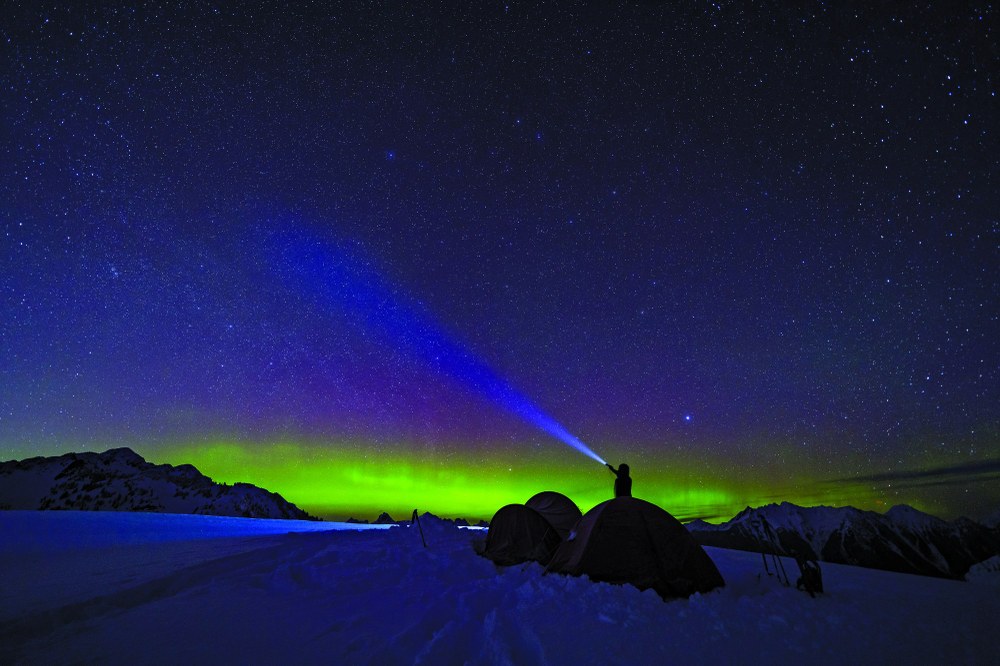
The shift away from summer’s longer, warmer days typically comes with apprehension. Even the snow sport fanatics brace themselves for the oncoming gloom of fall and winter days. But this new season has a lot to offer, especially if we keep our heads up and our eyes toward the sky. Thanks to the fall equinox, there are some neat things to watch out for this month.
What is an equinox?
An equinox happens twice a year: on the first day of fall and the first day of spring. Most of us recognize the equinox as a full day, but it’s actually the exact moment in time when the sun passes over the celestial equator. During the fall equinox, the sun passes the equator toward the south, resulting in gradually shorter days for the northern hemisphere as the North Pole starts tilting away from the sun. Because of the sun’s position over the equator during the equinox, both day and night are equal in length. Prepare your countdown — this year’s fall equinox will occur September 22 at 11:49pm.
The Harvest Moon
Prior to modern technology, farmers used celestial phenomena to track the changing seasons and govern farming practices. One of the most significant markers used by farmers was the moon. Moon phases indicated when to plant, weed, build fences, castrate animals, go fishing, and even gather the most flavorful horseradish. Each month’s moon had a specific nickname for the particular phenomena occurring during that period, such as the February Snow Moon for its heavy amount of snowfall, or the October Hunter’s Moon for its fattened game. One of the most important moons was the Harvest Moon, the first full moon following the fall equinox. The Harvest Moon was a distinct symbol of the changing seasons, indicating the onset of shorter days and colder months, named for the role it played in aiding farmers during the end-of-summer harvest.
Each night, the moon rises about an hour later than the previous night’s moonrise, but because of the tilt of the earth and the angle of the moon’s orbit during the fall equinox, the moon only rises about 10-30 minutes later (depending on latitude) for a few nights in a row. The additional post-sunset light provided by the Harvest Moon allowed farmers to work into the night and finish up their harvesting of summer crops before turning in for the winter. Nowadays our evening obligations aren’t as dependent on the moon, but we can still appreciate the glow of the Harvest Moon as we brace for longer nights.
Brighter aurora borealis
The fall equinox is not only great for appreciating the earth’s bounty, but the sky’s. During the fall equinox, people in the northern hemisphere are set to witness peak viewings of the Northern Lights. This is because the sun experiences a much higher rate of geomagnetic electrical disturbance (aka it’s shooting out a bunch of stuff). At the same time, the earth is tilted such that the North and South Poles sit perpendicular to the sun’s solar winds, increasing the chances that these solar wind particles enter our atmosphere and cause the aurora borealis glow. The combination of the sun’s heightened activity and the earth’s tilt are what enhance our chances of seeing the incredible light show this month.
Seize the shifting season
Whether fall means new adventures or waiting nine more months for summer, take advantage of the fall equinox and its celestial events. From big moons to glowing, green skies, this season offers plentiful bounty to appreciate.
This article originally appeared in our fall 2023 issue of Mountaineer magazine. To view the original article in magazine form and read more stories from our publication, visit our magazine archive.
 Skye Michel
Skye Michel